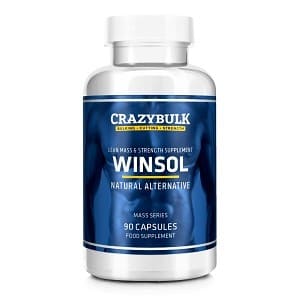Stanozolol, a synthetic steroid of the dihydrotestosterone (DHT) group, is an androgen and anabolic steroid classified as an illegal substance. Winthrop Laboratories developed it under “Winstrol” in 1962. Although it has been used for many years to treat conditions such as muscle wasting, it has never been approved for human use by the FDA.
The original purpose of stanozolol was to help treat people with low red blood cell levels by stimulating the production of new red blood cells.
It works much like another well-known drug called erythropoietin or EPO, produced naturally in the body by peritubular cells in the kidneys. Because of this, stanozolol is sometimes used by athletes who inject it to improve their endurance and stamina because it allocates oxygen more efficiently to muscles (it works like EPO). It also helps build muscle mass which makes it attractive to many bodybuilders.
Learn more about Winstrol cycles to better understand how it impacts muscle mass development.
Stanozolol was first approved for use by people with certain types of anemia (low red blood cell count). Still, later on, athletes began taking advantage of its muscle-building properties and started abusing it as a performance-enhancing drug.
In addition, people have been known to take low doses orally for skin and tissue repair after injuries such as burns to promote healing. Some bodybuilders take stanozolol at the end of a cycle to aid in the recovery of natural testosterone levels.
Different forms and brand names for stanozolol include Winstrol, Stromba, Stanabolic, Starabol, and others.
Understanding Winstrol side effects is crucial for those considering its use.
This drug is sometimes taken by people who require surgery as it has been found to decrease intraocular eye pressure.
Stanozolol can be injected directly into the muscle or taken orally in tablet form and usually comes in pill form (as Stanazol) or liquid solution (as Winstrol). The oral dosage range is 1-10 mg per day for men and 0.5-2 mg/day for women. However, it is not recommended that women take this drug (even at low dosages) because it can cause irreversible masculine traits such as lowered voice timbre, increased facial hair growth, enlargement of the clitoris, and baldness.
This drug is often combined with other steroids for cutting or bulking cycles to improve muscle gains or fat loss. Examples of combinations include Anavar/Winstrol, Deca Durabolin/Primobolan/Winstrol, Dianabol/Anadrol/Winstrol, Equipoise/Winstrol. Other drugs that are sometimes combined with stanozolol include human growth hormone (HGH), insulin-like growth factor 1 (IGF-1), thyroid hormones (T3 and T4), amphetamine, or diuretics (for water and electrolyte balance).
Explore Winstrol vs. Anavar to see how these two steroids compare in different scenarios.
In addition, this drug is known to have a diuretic effect on the body, so it may be necessary to take additional diuretics while taking this drug. Some of the side effects associated with stanozolol include acne, oily skin, reduction in HDL-cholesterol levels (“good” cholesterol), hypertension (high blood pressure), increased libido, edema (swelling due to fluid retention), suppression of endogenous testosterone production by the testes, liver damage/inflammation that leads to jaundice (yellowing of the skin) and even death. In women, significant side effects can include enlargement of the clitoris and deepened voice timbre. In addition, bodybuilders who abuse anabolic steroids are at substantial risk for coronary artery disease.
One of the most common side effects is that it can lower your HDL-cholesterol or “good” cholesterol levels in your body, but only by about 10%.
Stanozolol has been known to cause cancer in some people when used for prolonged periods.
Those who use this drug need to have their liver regularly monitored because they are at greater risk for liver damage with its use. Long-term effects associated with stanozolol include:
- An increased risk of developing breast cancer.
- Cardiovascular disease.
- Enlargement of the left ventricle of the heart.
- High blood pressure.
- Changes in cholesterol levels increase the risk of stroke myocardial infarction.
Discover Winstrol Depot for insights into injectable forms of this steroid.
Stanozolol is currently classified as a Schedule III drug, and it has been banned by the International Olympic Committee (IOC) and many sporting organizations. However, it is not only athletes who are at risk for using this drug. One study found that 2% of Canadian women aged 18-59 used stanozolol in 1993/1994. The FDA first approved stanozolol in 1996 for treating hereditary angioedema (abnormal swelling due to fluid retention). That same year, the FDA also approved it as a treatment for people with anemia (low red blood cell count caused by disease or decreased production of red blood cells) but prohibited its use by athletes. In 1999, the U.S. FDA required stanozolol manufacturers to put a black box warning on the product label about severe side effects, including myocardial infarction (heart attack), stroke, liver damage, and psychiatric changes in some individuals who use this drug. The manufacturer further emphasized that it should only be administered by experienced physicians aware of the potential complications associated with its use.
Stanozolol is an anabolic steroid derived from testosterone that contains a c17 methylation, rendering it orally active. It was used with other drugs to treat hereditary angioedema but has been widely abused by athletes to enhance muscle strength and performance.
